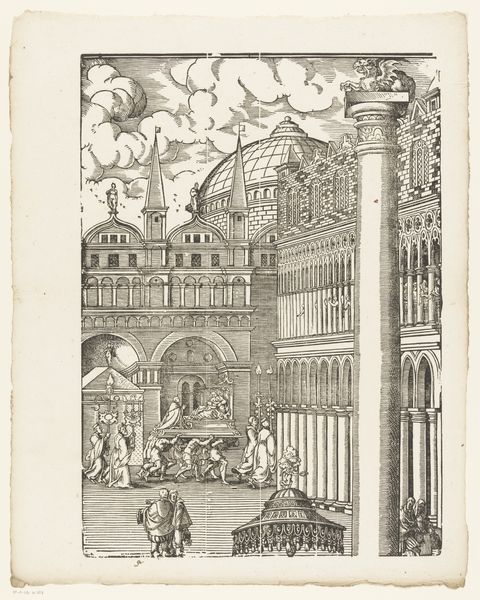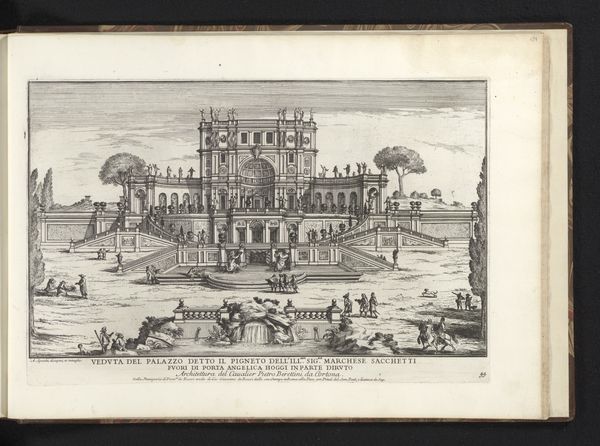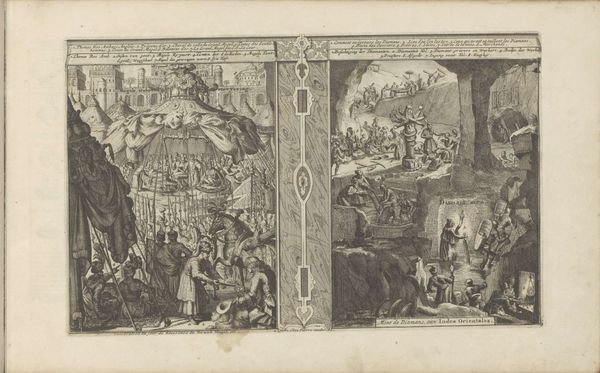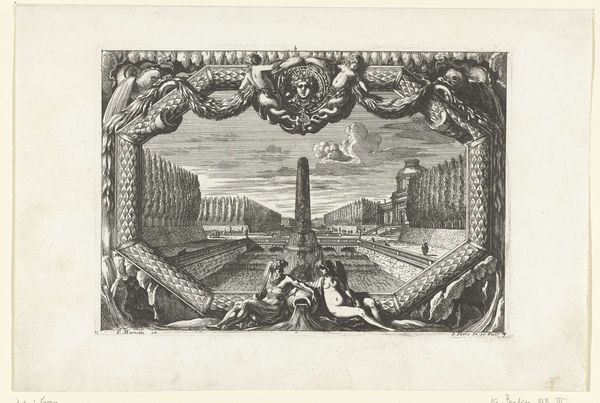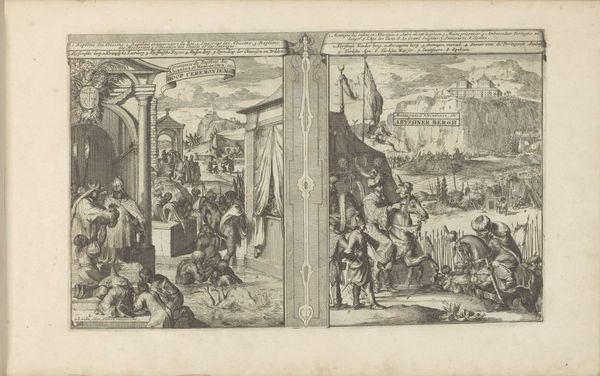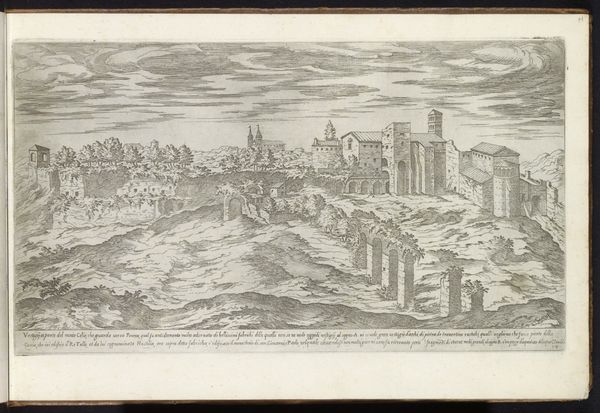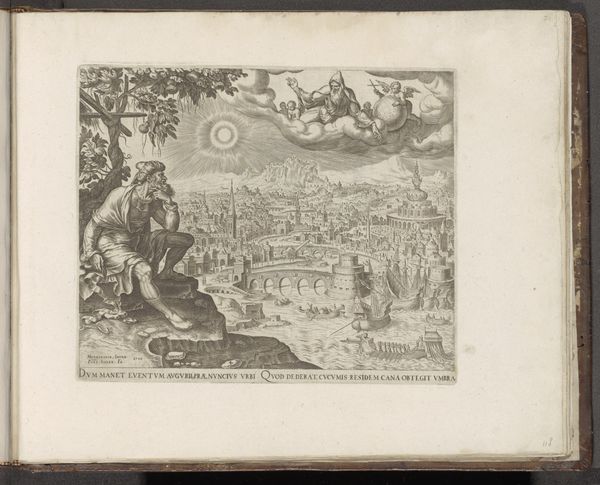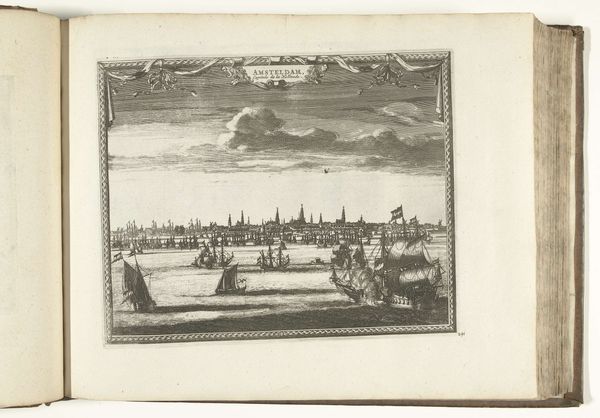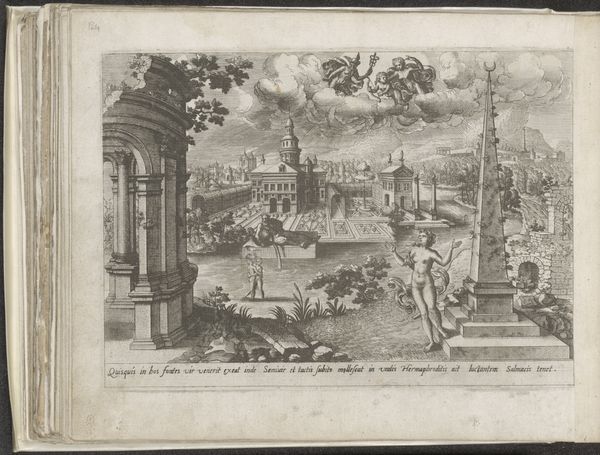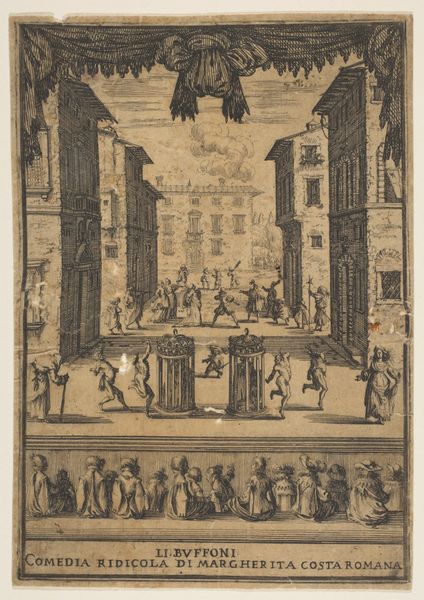
drawing, print, ink, engraving
#
drawing
#
venetian-painting
#
baroque
# print
#
landscape
#
ink
#
pen-ink sketch
#
pen work
#
cityscape
#
engraving
Dimensions: height 189 mm, width 289 mm
Copyright: Rijks Museum: Open Domain
Curator: This is a 17th-century print entitled "Gezicht op het Piazzetta te Venetië," or "View of the Piazzetta in Venice." It's an engraving rendered in ink, showcasing a bustling cityscape. Editor: My first impression is a feeling of expansiveness, despite the monochrome palette. The eye is drawn to the architectural detail and how it frames the figures populating the piazza. There's an order in the lines, the forms, but a chaotic energy conveyed through the movement of figures. Curator: Indeed. It's fascinating how printmaking at the time allowed for such widespread distribution of images, documenting the architecture and urban life of Venice. Consider the socioeconomic implications. How accessible would depictions of La Serenissima be to different classes through these printed images? Editor: Precisely! We see Venice here as a center of trade and spectacle but what about the daily lives of women and marginalized communities? The positioning of classical figures and gondolas seems almost romantic, overshadowing the narratives of struggle and survival present then as now. Curator: But we can't dismiss the craft of it either. The fineness of the engraving suggests a specialist workshop, perhaps catering to the Grand Tour travelers. These images then weren’t just documentation but commodities in themselves, integral to a burgeoning tourism industry. We might want to reflect upon which stories such an industry supported and valued in the past and how those forces affect our contemporary consumption and production of artworks. Editor: Absolutely. Even the deliberate use of perspective contributes to an idealized view. By the medium's very nature, the engraving can't help but present a curated reality—selecting specific stories over other lives also taking place within the same physical space, the same sociohistorical circumstances. These limitations remind us how even landscapes can be tools, to serve power. Curator: Reflecting upon how material means shaped historical realities really makes me ponder the interplay between representation and economic forces. Editor: And seeing the world from a less-mediated and more inclusive and equitable view could benefit us as well. Perhaps next time, let's spotlight some Venetian women artists, voices that history tried to obscure.
Comments
No comments
Be the first to comment and join the conversation on the ultimate creative platform.

